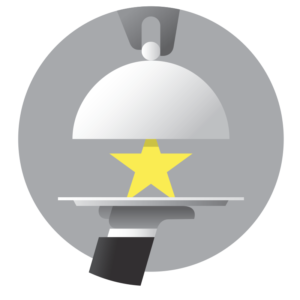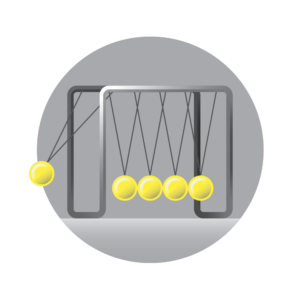Interview: Lars Diemer on the new possibilities of virtual engagement
We interviewed our CEO, Lars Diemer, about Agnitio’s update to Rainmaker Remote and also the wider potential of ‘virtual engagement’ technologies. While there are many technologies that have promised real change, this one seems to be an immediate hit with both life science companies and healthcare professionals.
Rainmaker Remote is a virtual engagement solution. Perhaps you could explain what ‘virtual engagement’ means?

There is also online group communication like the webinars that we are familiar with. And then there’s the broader communication version like online conferences.
So it’s online versions of the kind of communications that already take place today?
Pretty much. It’s high-value face-to-face communication like we know from ‘normal’ meetings but made more convenient.
In what way is it convenient?
Well, for an HCP there’s the immediate benefit of being able to schedule a meeting when it fits with their needs. For some doctors, this might be after patient consultations have finished. For others, it might be lunchtimes a couple of days a week. With virtual engagement, it’s easier for them to choose when they want to interact.
Beyond convenience, what other benefits are there for healthcare professionals?

With Rainmaker Remote, for example, it’s easy to switch between different kinds of content. You don’t have to log out and then log back in again.
You can start out with a presentation, then bring up an interactive graphic, then move to a PDF of clinical data and then back to the presentation. That matters because it’s responsive – you can follow the conversation and act accordingly. That’s a better experience for HCPs.
Other HCP benefits?
HCPs also get to interact with the content. It’s not a passive experience. People get involved in the content – clicking and moving sliders – and then get immediate feedback on their actions.
It’s also possible to conduct polls, where people can give their views on a topic. That’s a great way, actually, to start a conversation. And there’s also the chat functionality which can give instant feedback to the presenter.
There are loads of ways for people to get involved. It all adds up to a highly engaging experience for HCPs.
And for pharma?
That’s a win too. Online meetings are – put bluntly – cheaper because the process is more efficient. You can schedule more meetings during the day because there’s no travel time etc.
Is cost reduction the only benefit?
No but it is a big one. The number of field reps has been reduced pretty dramatically over the last few years. Yet the number of doctors isn’t falling. This is a way to square the circle.
This efficiency has other benefits too. One of the trends that we’ve seen is that more ‘internal’ staff are now customer-facing. The Medical Department isn’t just an internal resource. They are now interacting with stakeholders. Likewise, MSLs are popular with HCPs but fewer in number, so access is limited. Virtual engagement makes all this easier. Customer teams can use the technology to connect these internal experts with their customers.
That’s a huge thing, actually, being able to connect a healthcare professional with a medical or product expert in this way. It’s a major upgrade in the service level.
What about group meetings? Why are they important?
A big reason is that HCPs increasingly work in teams in many markets. They work together as a unit and share decision making. That’s a very different dynamic to general practitioners working in isolation. This technology enables companies to take account of this and schedule communication that addresses the whole team at once. We think that this will be ever more important in the future.
Virtual engagement also enables you to more easily bring together HCPs without too much concern for geography. This might be specialists located in different parts of the country, ‘payers’ from different regions or even countries, or simply GPs or hospital nurses who share a particular interest in a topic.
How do HCPs access it?
They just need an internet connected device – laptop, mobile device, stationary computer. There’s no downloading of software or apps. They just click a link and they’re in. No messing about.
And HCPs are really used to this technology now. We’ve seen recent stats that showed that four out of five physicians have access to a tablet for their work. This is now normal for HCPs.
You can still do this without technology, just by putting people together in a room. Is there anything specific that the tech brings?
You can do it but not as easily. And we all know that if something is difficult or complex then it’s less likely to happen. Convenience really counts!
How does that work?
Imagine that you’re running a group meeting using Rainmaker Remote with seven doctors. They are each seeing the same presentation but can each interact with it independently. Every action, click and view of each attendee can be captured without it affecting other attendees. It all works independently.
If you brought people together physically, you could perhaps do it if you gave everyone an iPad with their own version of the presentation running on it – but who’s going to do that? It would be weird. But run the meeting with Rainmaker Remote and it’s completely normal. You can understand how people actually see things.
What else have you added to Rainmaker Remote?
We’ve really been thinking about its practical use. It has to be easy and it has to be fast. Flexibility has been key for us.
We’ve also looked at it holistically as part of your multichannel communications. You can follow up any remote discussions with on-demand channels like microsites. After an online meeting, doctors and nurses get a link to a personalised website that gives more information on the topics that were discussed – leveraging the data that Rainmaker Remote provides.
Will this technology catch on?
We’ve got customers using Rainmaker Remote now. And generally virtual engagement is increasing in popularity. I saw some data the other day that showed that half of healthcare professionals have already attended a virtual meeting. This is technology that is proving its value – and growing.
Do you expect this to replace face-to-face contact?
Right now, we expect it to supplement it. I think that there’s a lot of value in sitting down with people. Being physically present matters. That’s just human. Virtual engagement is actually a great way to build on that. At its simplest this can be a follow up to a physical meeting. But there is so much more that’s possible.
Lars U Diemer: Chief Executive Officer, Agnitio
Lars is driven to realize the potential of technology to connect, inform and empower all healthcare stakeholders. He has served in numerous international roles in global technology companies prior to joining Agnitio.
Learn more about Rainmaker Remote
Part of Rainmaker’s multichannel solution, Remote provides virtual engagement channels that are flexible, enable unique experiences, and secure complete data insights on all interactions.
Never miss a thing
Join our email mailing list and receive all Agnitio articles and digital marketing guides as soon as they are published.








